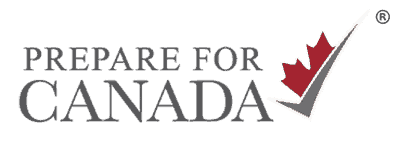
Preparing for your driving test in Canada is vital, especially if you want to pass the exam on your first try. Getting a driving license in Canada can be tough and the process to get there can often be frustrating. It involves both written driving test questions and a road test. Still, a driving license is worth it in the end, especially in Canada. With a driving license, you can get around quickly and efficiently. This will save you a lot of time travelling. After all, time is money.
In this guide, I will cover Canada’s graduated licensing system and each of the driving licenses. I will also cover tips and techniques to prepare for your test and pass it on your first try.
Why is a Driving Test Necessary Anyway?
In Canada, provincial governments are responsible for establishing transportation laws. Because of this, a driving test will vary slightly from province to province but the idea behind tests is still the same. The test ensures your ability to drive a car while accounting for your own safety and the safety of others. This makes sure that everyone on the road knows how to drive a car safely, helping to prevent road accidents every day.
Advantages Newcomers Have When Getting a Driving License
Canada and a group of countries got together and made the Foreign License Exchange Agreement. This agreement allows any migrants between these countries to exchange their previous driving licenses with a new one.
Advertisement:
The following countries have a License Exchange agreement with Canada:
- Australia
- Austria
- Belgium
- France
- Germany
- Japan
- Korea
- Ireland
- Switzerland
- Taiwan
- United States of America
- United Kingdom*
*United Kingdom: England, Wales, and Scotland are also included in the agreement but Ireland is discluded.
If you emigrate from one of these countries, you can exchange your previous driving license for a Canadian license without a driving test. This opportunity is only available to immigrants for a maximum of 60 days after arriving in Canada. After two months, you will have to go through the normal procedure for getting a driving license.
This is also available to interprovincial migrants. If you already have a license in your current province and are moving to a new province, you can swap your old license for a new one.

Related Posts:
Canada’s Graduated Licensing System
Canada has three driving licenses:
Advertisement:
- G1 license
2. G2 license
3. G driving license.
These are the most common names for the tests but some provinces have different names. Each license has its own driving test. The driving tests are different according to the type of driving license they are for.
G1 Driving Test Questions and License
The G1 driving license, also known as a learner’s license is the most basic of the three. It also is the easiest test to pass because it only has written driving test questions and no driving is required. The test has two parts with 20 driving test questions in each part:
- road rules
- road signs.
In total, the whole G1 driving test has 40 multiple-choice questions.
To pass the test you need to get higher than 80% on each section. That means at least 16/20 questions correct on each of the two sections. If you pass one and fail the other, you will only need to retake the section you failed.
Here is a practice G1 knowledge test. It is a good idea to do some practice tests before you do your final G1 knowledge test. That way, you will know what to expect from the test.

G1 License Restrictions
Once you pass the test and get your learner’s license, you are allowed to drive a car. However, there are certain restrictions on the new driver:
- You must have an accompanying driver in the front passenger seat to assist and supervise you. This driver must have a full G license.
2. You cannot drive at a speed higher than 80 km/h or drive on any road that has a speed limit higher than 80 km/h. If your accompanying driver is a driving instructor, however, you are allowed to drive on any road.
3. You are only allowed to drive between 5:00 AM and Midnight.
Not following any of these rules can have your license suspended as well as a fine, depending on your offence.
G2 Road Test and License
A G2 driving license gives you more freedom compared to a G1 license. This is why the test is a lot harder to pass. For starters, the G2 driving test is a road test, so you will have to get in a car and show the instructor that you have the ability to drive a car. Some things that a G2 driving test will cover are:
- Obeying traffic lights and traffic signs
2. Overtaking and lane-changing
3. Driving through intersections (both with traffic lights and stop signs)
4. Parking (parallel, forward, and reverse)
5. Making u-turns, two and three-point turns, and reversing
6. Turning your vehicle on and off as well as other internal features.
It is recommended that you practice all of the things mentioned above before your driving test. Parallel parking is one of those things that people have trouble with. If you can’t get it right, it’s an automatic fail.
Checking your mirrors and obeying speed limits, traffic lights, and traffic signs are some things to keep in mind during the test. It is also best if you don’t ask for advice. The driving instructor is looking to see whether or not you know the rules.
For more information on the G2 driving test, take a look at Ontario’s Guide to a G2 Driving Test. Even though it is from the province of Ontario, it will give you a good idea of what to expect from a driving test anywhere in Canada.
G2 Driving License Requirements
There are also some requirements you need to meet to take your G2 driving test. These qualifications are:
- You must have had your G1 learner’s license for at least 12 months.
2. Your car must be fully functioning. The driving instructor can cancel the test even if a single light is not working. This is why it is very important to check your car before the test.
3. And of course, you must pass all aspects of the driving test. Those are listed above.
G2 License Restrictions
There are some minor restrictions on G2 drivers as well. They only apply to G2 drivers aged 19 or under and between Midnight to 5:00 AM.
If you have had your G2 license for less than six months, you can carry a maximum of one person under the age of 19.
If you have had your G2 license for more than six months, you can carry a maximum of three people under the age of 19. This restriction is in place until you get your Full G license or turn 20.
G Driving Test and License
A G driving license is the most advanced of the three. Naturally, it gives you the most driving privileges. This also means that the test to obtain a G license is harder than the previous ones. Once you have passed the test, however, a G License is definitely worth it.
A G road test is a more advanced version of the G2 road test. It will cover:
- Everything that is covered in the G2 test
2. Highway driving: lane changing and overtaking
3. Merging into and exiting highways.
Since the G2 road test has no highway driving, the G License covers almost every aspect of highway driving plus everything covered in a G2 test. This ensures you can drive a car on any road and in any situation.
G License Requirements
The G road test only has one requirement: You must have had a valid G2 license for at least two years. If you have completed an approved driving course, you only need to have had your G2 for eight months. Again, these timeframes might be different depending on your province.
G License Restrictions
There are no restrictions on a driver with a G license but that doesn’t mean they don’t have to follow the rules. A G licensed driver must follow speed limits, traffic lights and signs, and all driving rules. The driver must also have zero blood alcohol content. This applies to G2 and G1 drivers as well.
When you prepare for both the written driving test questions and road tests, you’ll enjoy the convenience of driving in Canada.
For more information about living and working in Canada, check out our upcoming free webinars!

My name is Zain Usmani and I am a freelance content writer who currently resides in Mississauga, Ontario. I immigrated from Pakistan to Canada 5 years ago and have lived in many cities ever since. I have lived in Calgary AB, Edmonton AB, Regina SK, London ON, and Mississauga ON, while visiting over 40 Canadian cities and towns. I have a great passion for writing and I love helping people through it.
